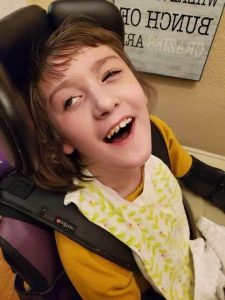Diagnosis












The diagnosis of Aicardi syndrome is based on clinical presentation, brain imaging and ophthalmology exam. Prenatal ultrasound examination or fetal MRI may detect some features which raise the possibility for the diagnosis. An examination by a pediatric ophthalmologist is required to identify the pathognomonic chorioretinal lacunae which is often the final step to confirmation. Colobomas and other optic disk abnormalities may also be present. Common MRI findings include polymicrogyria or pachygyria, periventricular and intracortical grey matter heterotopia, gross cerebral asymmetry, choroid plexus papillomas, ventriculomegaly, and intracerebral cysts, often at the third ventricle and in the choroid plexus. Common EEG findings include asynchronous multifocal epileptiform abnormalities with burst suppression and dissociation between the two hemispheres. If there is onset of infantile spasms, hypsarrhythmia may also be present.
